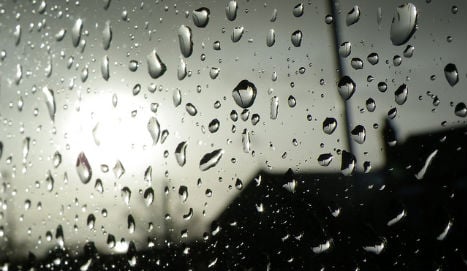On Bavaria's south-eastern border with Austria, firefighters and other emergency services were dispatched to stricken towns where roads and bridges were cut and some residents had to seek refuge from the waters on rooftops.
“The floods came so quickly that people had to escape to the roofs of their houses,” a spokesman for the Lower Bavaria regional police said, adding that many streets were submerged.
In the town of Triftern, around 50 children and 25 adults bunked down in their school on Wednesday after being cut off by the waters.
Over the border in Austria, heavy rain lashed the Salzburg region, flooding several roads and forcing several schools to announce closures for Thursday.
More to come
Four bodies were found floating in homes in France and Germany on Wednesday in flash floods that left water lapping at the doors of one of the Loire Valley's most famous chateaux.
French weather forecasters warned of more to come on Thursday.
Three people who had been trapped in a house at Simbach am Inn in southern Germany were found dead, local authorities said, and police warned several other people could be on the ground floor of the building.
The body of an 86-year-old woman was found in her flooded house in Souppes-sur-Loing in central France, parts of which have been hit by the worst flooding in more than 100 years.
In one incident in southern Bavaria, emergency services rescued 20 members of a school group when a boat trip on the Regen river ran into trouble with strong currents sparked by a sudden storm, authorities said.
Elsewhere, in southern Germany the rains left trucks jackknifed on flooded roads at Simbach am Inn.
Four people died and a dozen were injured in the southern Baden-Wuerttemberg region between Sunday and Monday.
'Never seen this'
In Paris, many promenades along the Seine were closed due to the high waters, which the mayor's office predicted could rise by another metre in the coming days.
Fire services have already made 10,000 call-outs across the country since the rain began on Sunday, according to authorities.
Schools were closed and thousands of people were evacuated in central regions because of the flooding, which weather forecaster Meteo France described as “exceptional, worse than the floods of 1910”.
Prime Minister Manuel Valls will on Thursday visit Nemours, 80 kilometres (50 miles) to the south of Paris, where residents had to be evacuated after the Loing river burst its banks.
“In 60 years of living here I have never seen this,” Sylvette Gounaud, a shopworker in Nemours said. “The centre of town is totally under water, all the shops are destroyed.”
The neighbouring Loiret region, home to the chateau of Chambord, saw the average rainfall of six weeks in just three days.




 Please whitelist us to continue reading.
Please whitelist us to continue reading.
Member comments